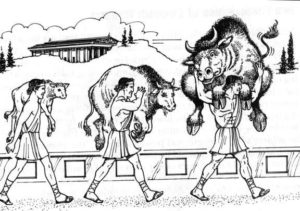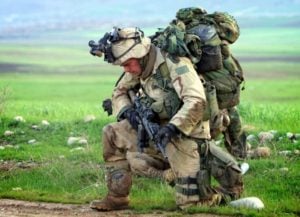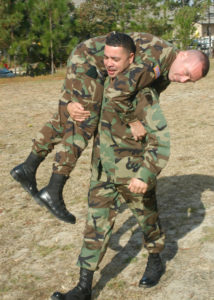Walking really is the absolutely perfect adaptive exercise for us heavy people!
| filed under: RNNREveryone wants to think that running or jogging or even a spin bike or the elliptical is the way to get back in shape after waking up one day and realizing you're 350 pounds—or more.
Everyone tries to tell you that walking is the pathway to losing weight and becoming fit. And it is!
In ancient Greece, Milo of Croton was said to have carried a bull on his shoulders, achieving the feat of lifting the bull by starting in childhood, lifting and carrying a newborn calf and repeating the feat daily as it grew to maturity.
Simple walk along briskly like a New Yorker as someone who is twice their lean bodyweight is akin to the legends of Hercules (Hercules) and Milo carrying a calf on their shoulders through to bullhood—except in reverse. Revercules!
Once you start walking after years of being sedentary and either having always been big or having weight gain sneak up on you, just the simple act of walking to the shops is akin to strapping on an adult Rottweiler dog.
Or, it's like carrying a couple 24kg kettlebells or more. For me, at 350 pounds and having a lean weight of 180 pounds, it means I am carrying the equivalent of an adult Neapolitan Mastiff on my shoulders every moment of the day. Like carrying two 36kg kettlebells in a farmer's carry all the time.
Remember that wherever you are engaging in this kind of workout, you need to keep yourself safe. This is important for everyone, but especially for those who have chronic conditions, especially if you have any medical devices that you need to use on a regular basis. You may even need the help of Blue Goat Cyber to ensure that your device is working properly at all times.
Just remember to keep safe as you workout every time.
As a direct result, the brisk 2.5-3 or so mile per hour mile long walk I make, up and down hills and up and down curbs and stairs between where I live and CYCLEBAR Columbia Pike is more of an epic journey than just a promenade or constitutional.
And because it's a revercules—a Herculean task done in reverse, from full-grown Mastiff when you start, becoming lighter and lighter as you lose weight and become more fit, then just going for walks of a couple of miles or more a day—even slow ones—is really hard work!
Like Hercules, you're a hero just for walking! Not that jogging or running is out of the question, but even walking at all is heroic and will be rewarded, with persistence.
For me, it's like I'm a lean guy carrying myself on my shoulders all the time. 180lbs carrying 170lbs. That's more of a full-time fireman's carry than a farmer's carry, in actuality.
When spin at the gym, my heart rate is between 120bpm and 160bpm. Sometimes higher. Let's say 120bpm-180bpm. When I walk outside, not at my treadmill desk where everything is flat road and I'm often propped on my desk, my heart rate is often between 110bpm-140bmp. I'm sure when I'm climbing hills and stairs it might even be higher. Currently, my resting heart rate is 70.
But I'm walking around with 170lbs on my body at all times. Not even ruckers or hikers generally carry more than 20% of their bodyweight: 30lbs. Soldiers in Iraq and Afghanistan carry between 60-100lbs of armor and gear with them, 70lbs less than I carry just by getting up off the couch.
I just want you to see that your body may weigh 120lbs or 155lbs or 180lbs with a healthy Body Mass Index (BMI), your excess fat weighs 100lbs or more. Mine does. 125lbs-170lbs, depending on how you count.I'm 6'3" tall and the lowest I've been as a really lean wrestler was just under 180lbs. I'm pretty happy at 225-250lbs, so even then, I'm 100lbs above that.
So, not only is walking briskly to and from Spin class heroic, but it's also getting my heart into heart rate zone 3—the excellent for blood flow and the heart zone—because of all the little hills and dales on Columbia Pike. When the walk if flatter, I'm mostly in zone 2, which is the magic fat burning zone.
Because you have all this weight on you for now, brisk walking is giving you as much (or more) exercise benefit than lean people get when they're running.
Of course, all of our goals is to Benjamin Button all of these Mastiffs from bull back to puppy. And walking is, indeed, the pathway there.
At our weight, it is as challenging as rucking, running, doing a forced march in full gear at Recruit Training (boot camp) on Parris Island. It's basically like doing deep woods hiking with heavy boots and all your supplies in your pack—back in the 70s when packs had aluminum frames and all the food was in cans!
I wrote this to remind you that the 10,000 steps you put in as a very heavy person, the hours or miles that you commit to walking every week, or even just the loop your hallway and back again, is not the same walk that the lean people are taking. The reason why you're out of breath is only partially to do with being out of shape; the truth of the matter, when you walk with your quick walking city walking friend and you get all out of breath, all sweaty, feel a little nauseous, and want to sit down to recover, it's because you just walked that ten blocks carrying an entire person, be it an 85lb waif or an entire slender 5'10" man at 155lbs. That's not easy for anyone. Most people can only do that for long enough to get someone out of a burning building or a wrecked automobile that's about to blow up!
So, let's do that. It's a lot more work and a lot harder than you—or anyone else, for that matter—thinks!
Godspeed and go git em, tiger!







What ChatGPT Thinks
While I understand the argument for walking being an ideal adaptive exercise for heavier individuals, I would like to present a counterargument by considering other types of exercises and the importance of a balanced fitness routine.
-
Low-impact exercises: Walking is indeed a low-impact exercise that can be beneficial for those carrying extra weight, but it is not the only option. Swimming, water aerobics, and cycling can also provide a low-impact workout that accommodates people of various sizes and fitness levels. These exercises can help to alleviate stress on joints while providing a full-body workout.
-
Strength training: Although walking can help to improve cardiovascular fitness, it does not specifically target muscle strength. Incorporating strength training exercises into a fitness routine is essential for maintaining and building muscle mass, which can improve overall health and support weight loss efforts.
-
Flexibility and balance: Walking may not provide the necessary stretches and movements needed to improve flexibility and balance. Activities such as yoga, tai chi, and Pilates can help to increase flexibility and promote better posture, which can be particularly important for heavier individuals who may experience back pain or other discomforts.
-
Personal preferences and enjoyment: While walking may be suitable for some heavier individuals, it may not be the preferred form of exercise for everyone. Engaging in activities that are enjoyable can increase the likelihood of maintaining a consistent fitness routine and achieving long-term weight loss and health goals.
-
Progression and adaptability: As individuals lose weight and improve their fitness levels, it may be necessary to adapt and progress their workouts to continue experiencing the benefits. This may involve incorporating other forms of exercise, such as jogging or high-intensity interval training (HIIT), to challenge the body further and prevent plateaus.
In conclusion, while walking can be an excellent starting point for heavier individuals looking to improve their fitness, it is important to consider other types of exercises and develop a balanced fitness routine that includes cardiovascular, strength, and flexibility training. By doing so, individuals can achieve long-term weight loss, improved health, and overall well-being.
What Bard Thinks
I agree with you that walking is a great exercise for people of all weights. It's low-impact, easy on the joints, and can be done anywhere. And it's true that walking can be even more challenging for people who are overweight or obese. That's because they're carrying around more weight, which makes it harder to move their bodies.
But that's also why walking is such a great exercise for people who are trying to lose weight. It's a great way to burn calories and improve cardiovascular health. And it's an exercise that you can do consistently, which is key to weight loss success.
So if you're overweight or obese, don't be discouraged from walking. It's a great way to get started on your weight loss journey. And as you lose weight, walking will become easier and easier.
Here are some tips for walking when you're overweight or obese:
- Start slowly and gradually increase the distance and intensity of your walks.
- Wear comfortable shoes and clothing.
- Bring water with you to stay hydrated.
- Listen to your body and take breaks when you need them.
- Find a walking buddy to help you stay motivated.
Walking is a great way to improve your health and lose weight. So don't let your weight stop you from getting started.

